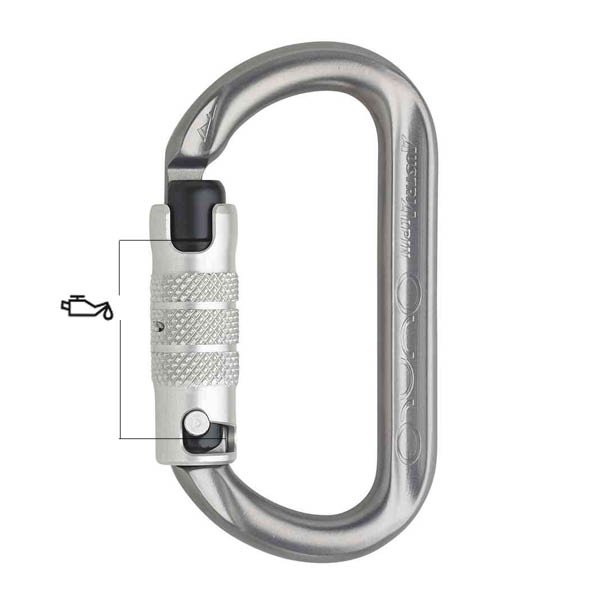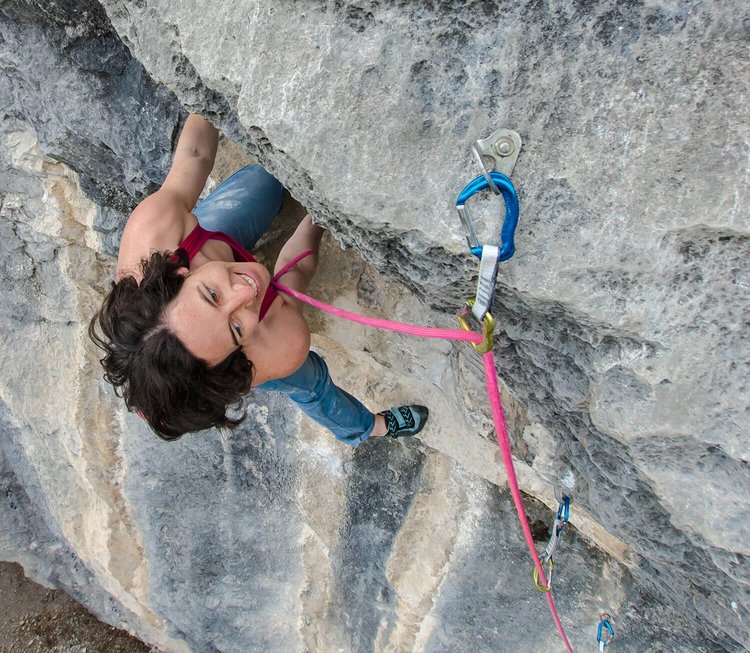Valuable care instructions for your AUSTRIALPIN product.
Everyone has a dependable piece of gear from the ‘good ol’ days’. The real question is: How did it last so long? There’s a lot more to the story than the original product quality. If you want your gear to last, you have to take good care of it, and make sure it is properly stored. Here, we’ll show you how.
CARABINERS
- Clean muddy/dirty carabiners with clean water, a washcloth and/or a soft brush.
- Air dry - Never dry with a strong heat source.
- Any piece of gear where there is metal-on-metal requires lubrication to operate smoothly. For carabiners, a dry lubricant should be used in place of oil, as commercially available oil will cause dust and dirt particles to collect. The lubricant should be applied to all openings when the carabiner is in both the open and closed position. Especially important: After use near, or in, the sea (where a high concentration of salt is present in the air and water) clean immediately to avoid any detrimental impact from the salt on the metal of the carabiner.

UIAA release concerning stress corrosion
QUICKDRAWS
A study conducted by a renowned magazine recommended replacing quickdraws after 5 years (heavy use) or every 7-10 years (moderate use). In most cases, you can see if you can still use a quickdraw:
"If any stitching is worn, or if the webbing is showing any tears, it must be replaced immediately. Pay special attention to quickdraws left in a project! Sun and weather can affect the strength of the quickdraw without necessarily being able to see any sign of wear. Before you clip any gear, it is important to decide for yourself if you can trust it."
Peter Manhartsberger, AUSTRIALPIN Product Manager

ICE TOOLS
- Ice tools – especially the pick - should be inspected after each use. If there are any cracks, or anything which casts even the slightest doubt, replace immediately. Every pick will break at some point, it is just a question of when. In most cases, this point can be seen in advance, before it happens while climbing a route.
- After changing the picks, or after heavy use, the screws must be tightened, otherwise they can become loose when swinging the tool. Swinging the ice axe causes increased force which can also increase the risk of breaking.
- Our pro ice climber Benni Purner gives his advice for sharpening ice tools:
„Ice tools should be filed by hand, and never from a machine. Personally, I use a Mühlsägefeile file. In order to keep the angle fixed while filing, the best is to fix the tool with a vice. Always file towards the tip. Finally, file the pick until it is sharp, but not too sharp. If the pick becomes too thin it will become blunt faster."

CRAMPONS
- The crampon is an essential link between you and the ice. In order to find the best crampon for your purpose, bring your boots along the store to ensure a perfect fit!
- Crampons for waterfall ice (skySteep, skyClimb und tyrol P12) should be filed regularly in order to ensure they hold well in steep, frozen terrain.
- After each use crampons should also be inspected for any cracks, and to ensure the screws are properly tightened. To avoid rust, crampons should always be stored clean and dry.

AUSTRIALPIN RETAILERS CLOSEST TO YOU



